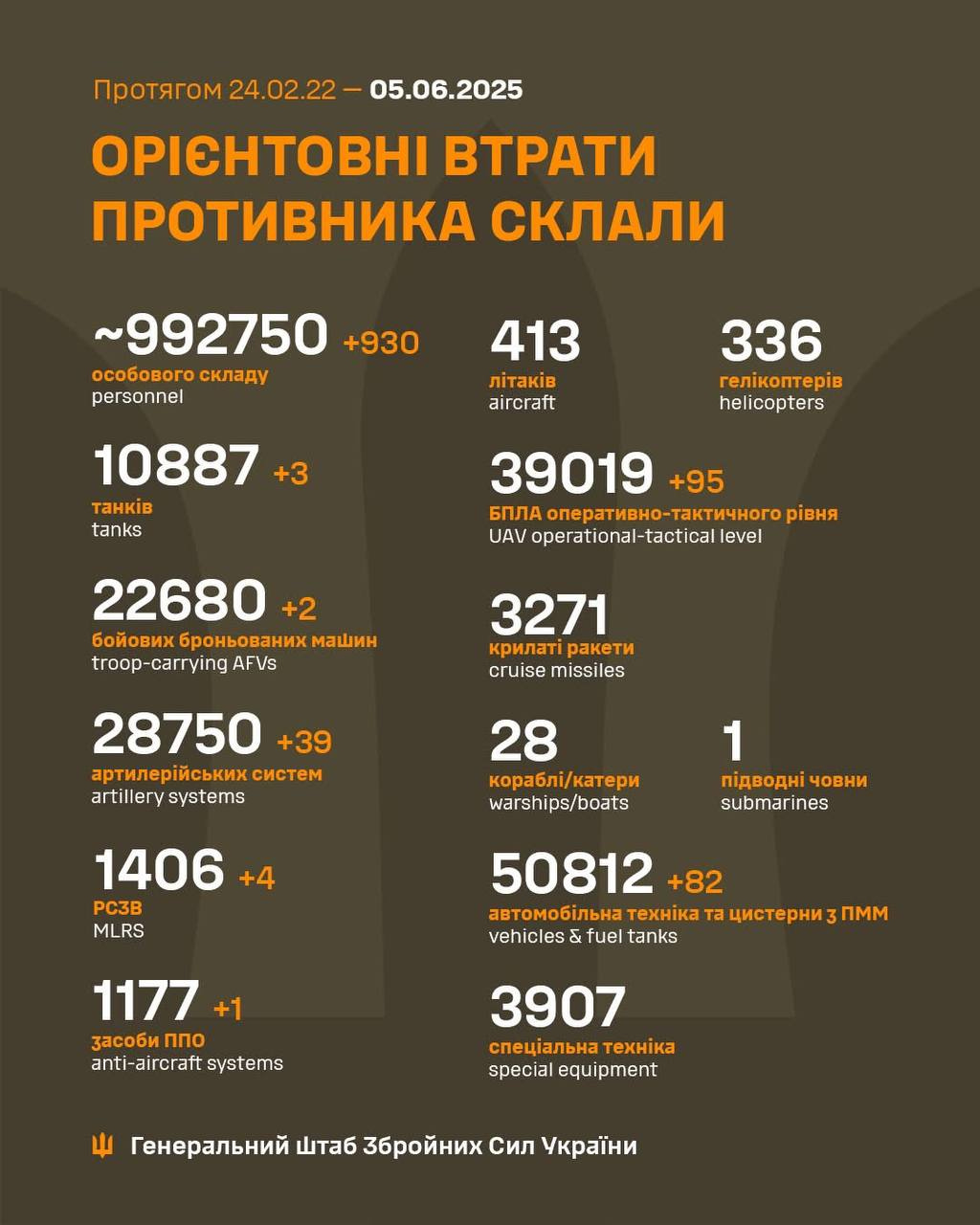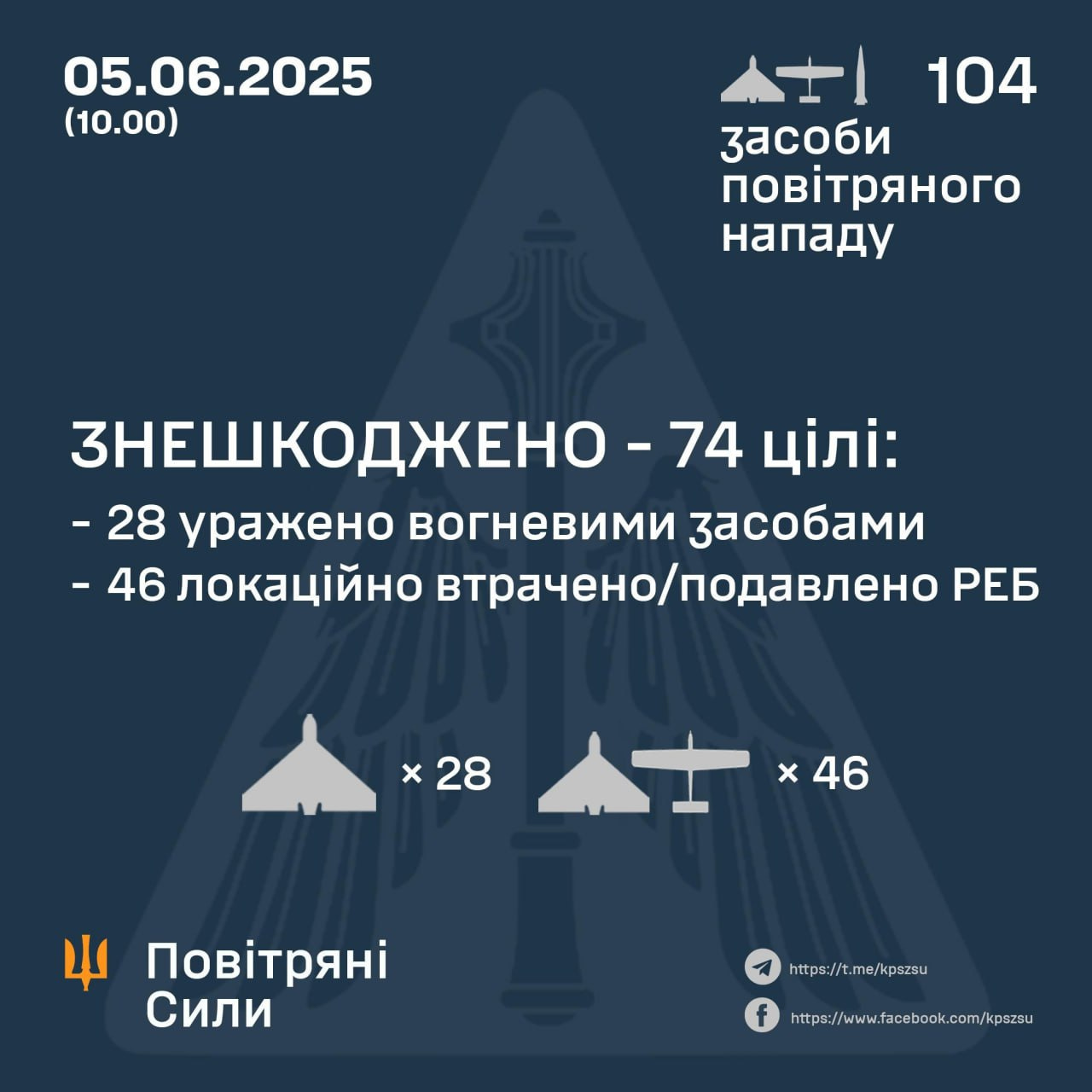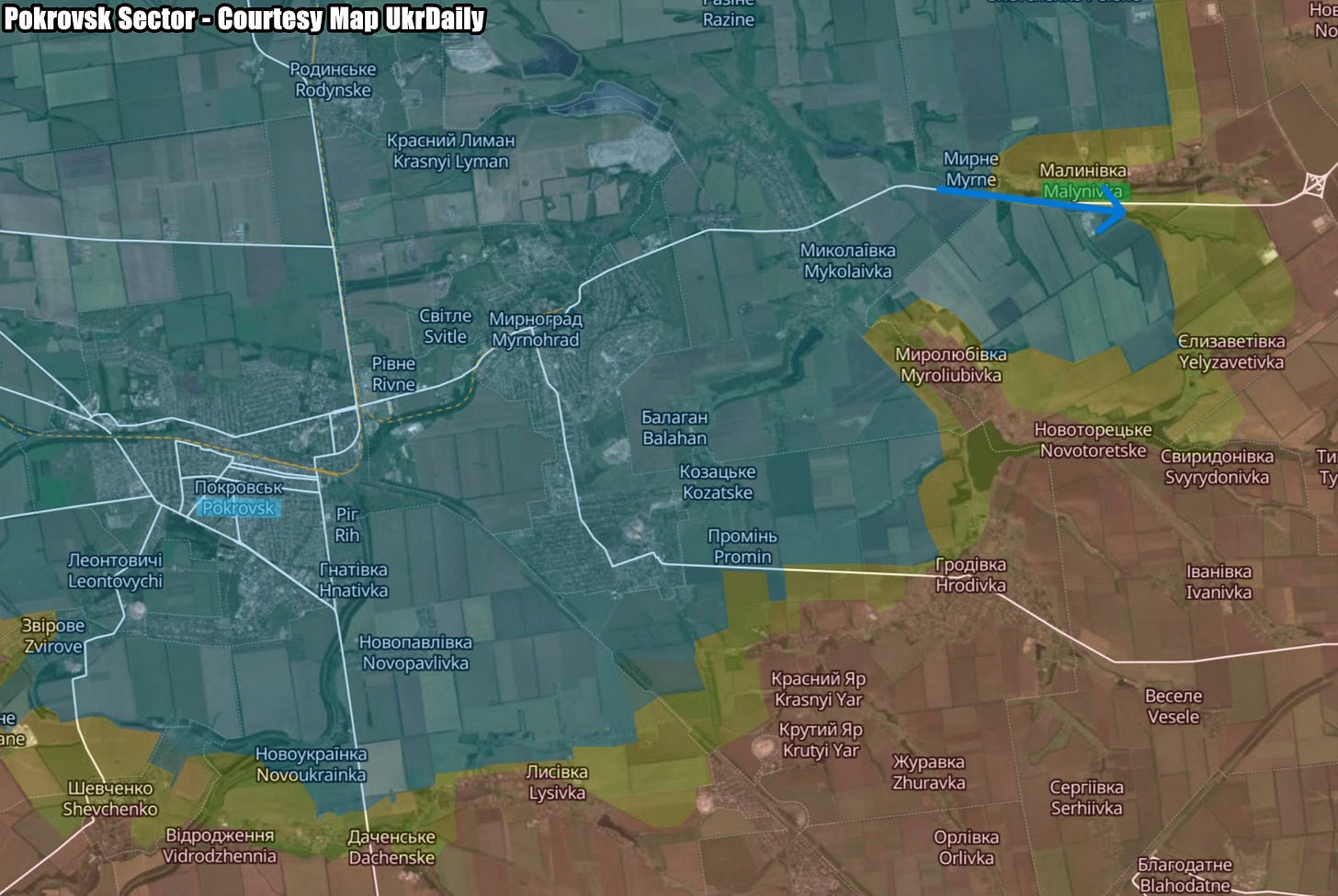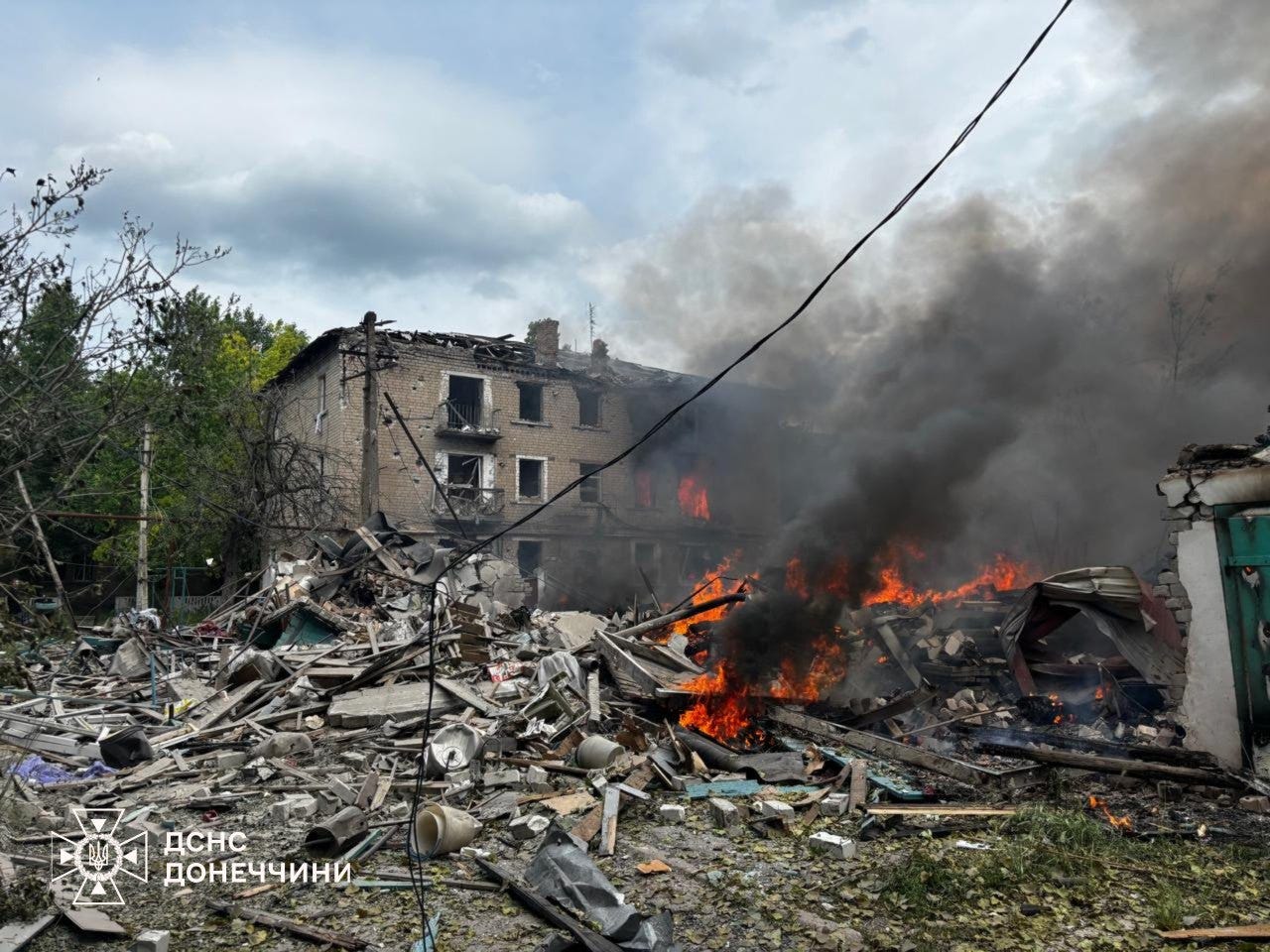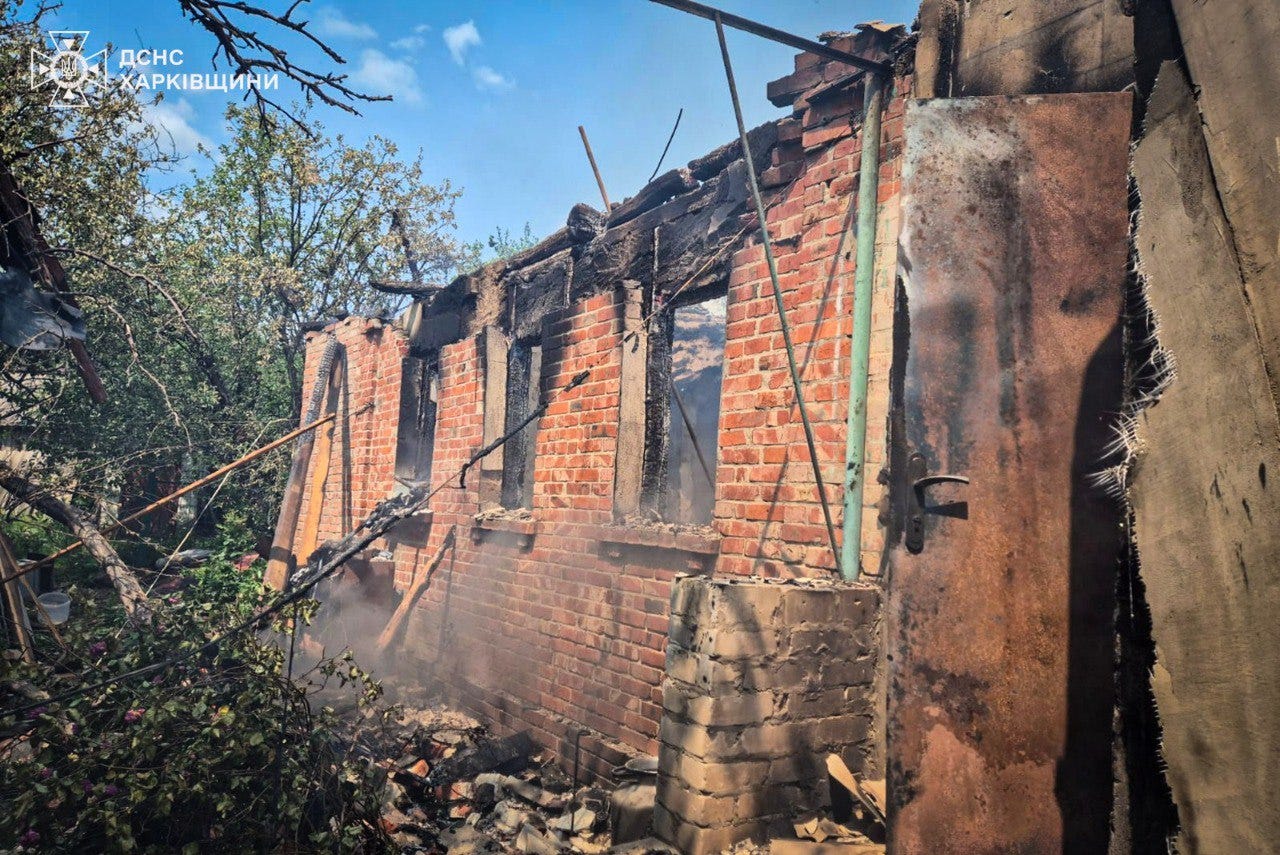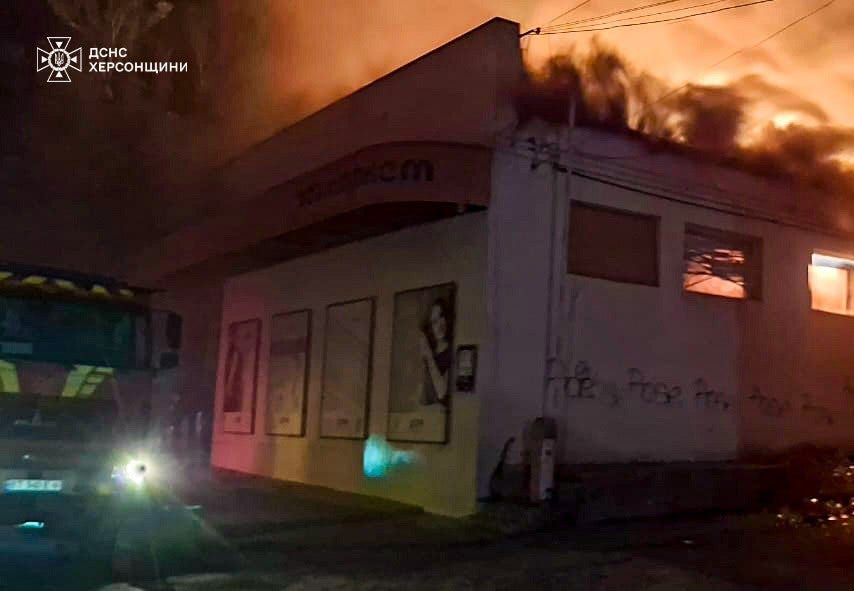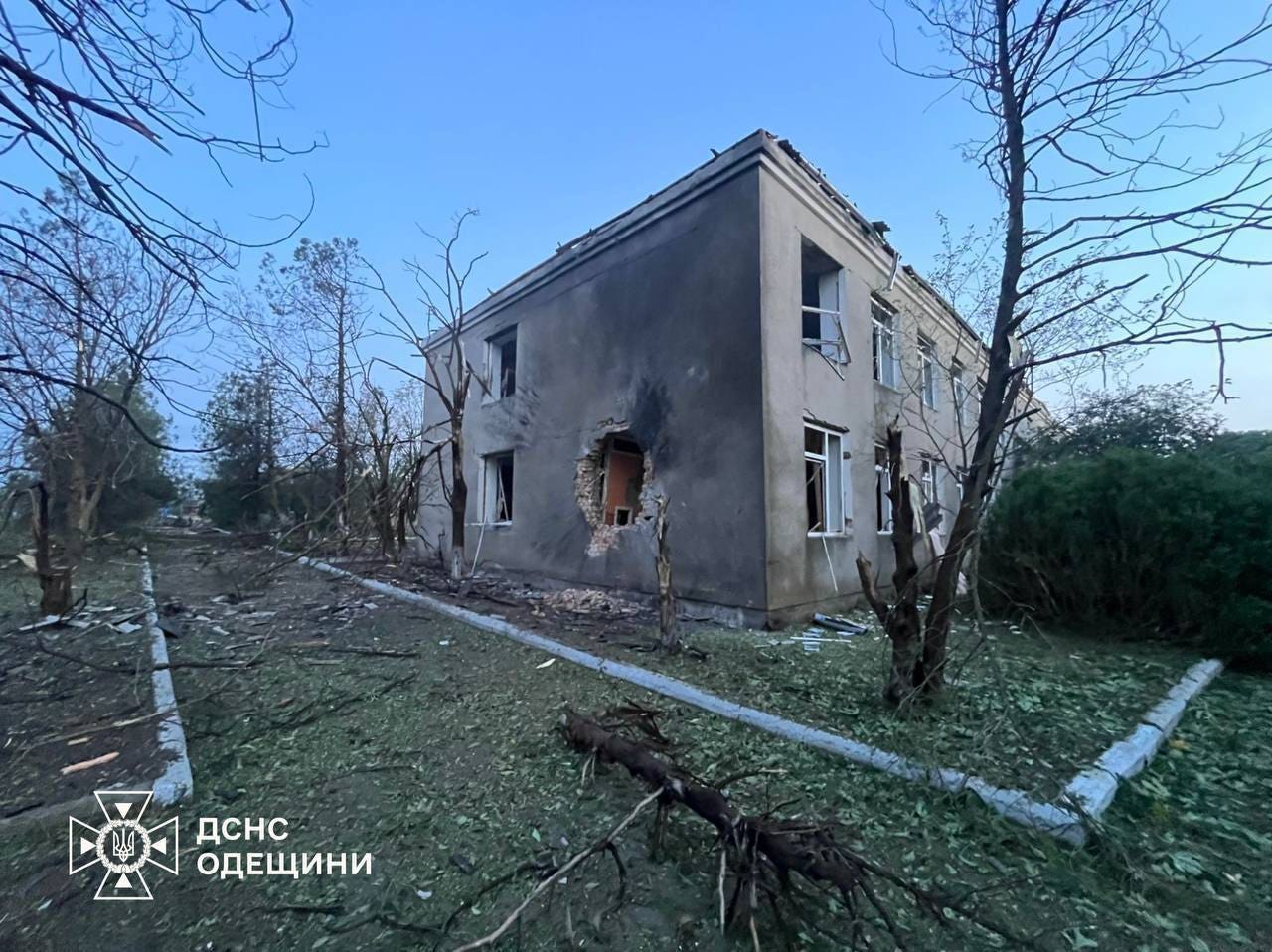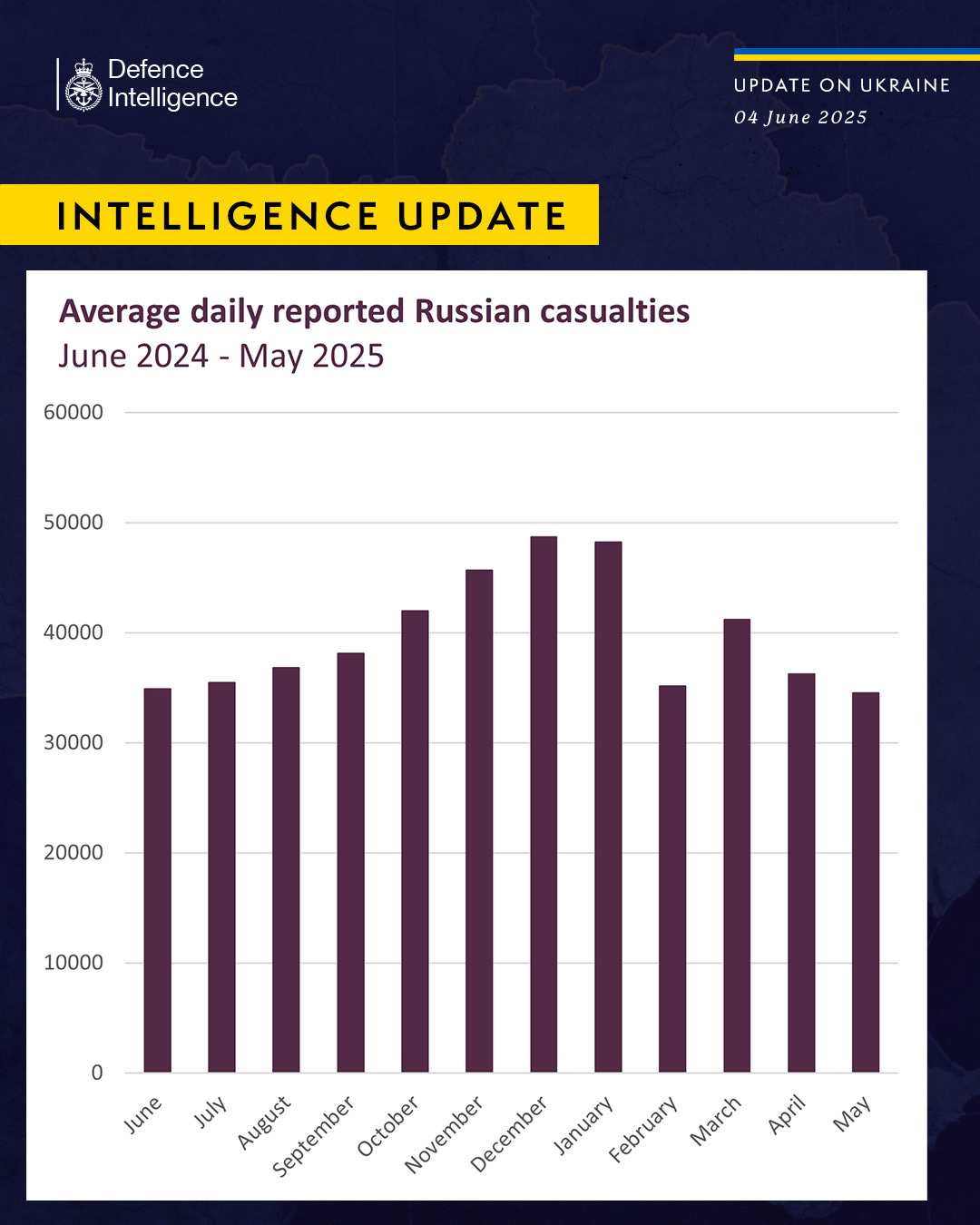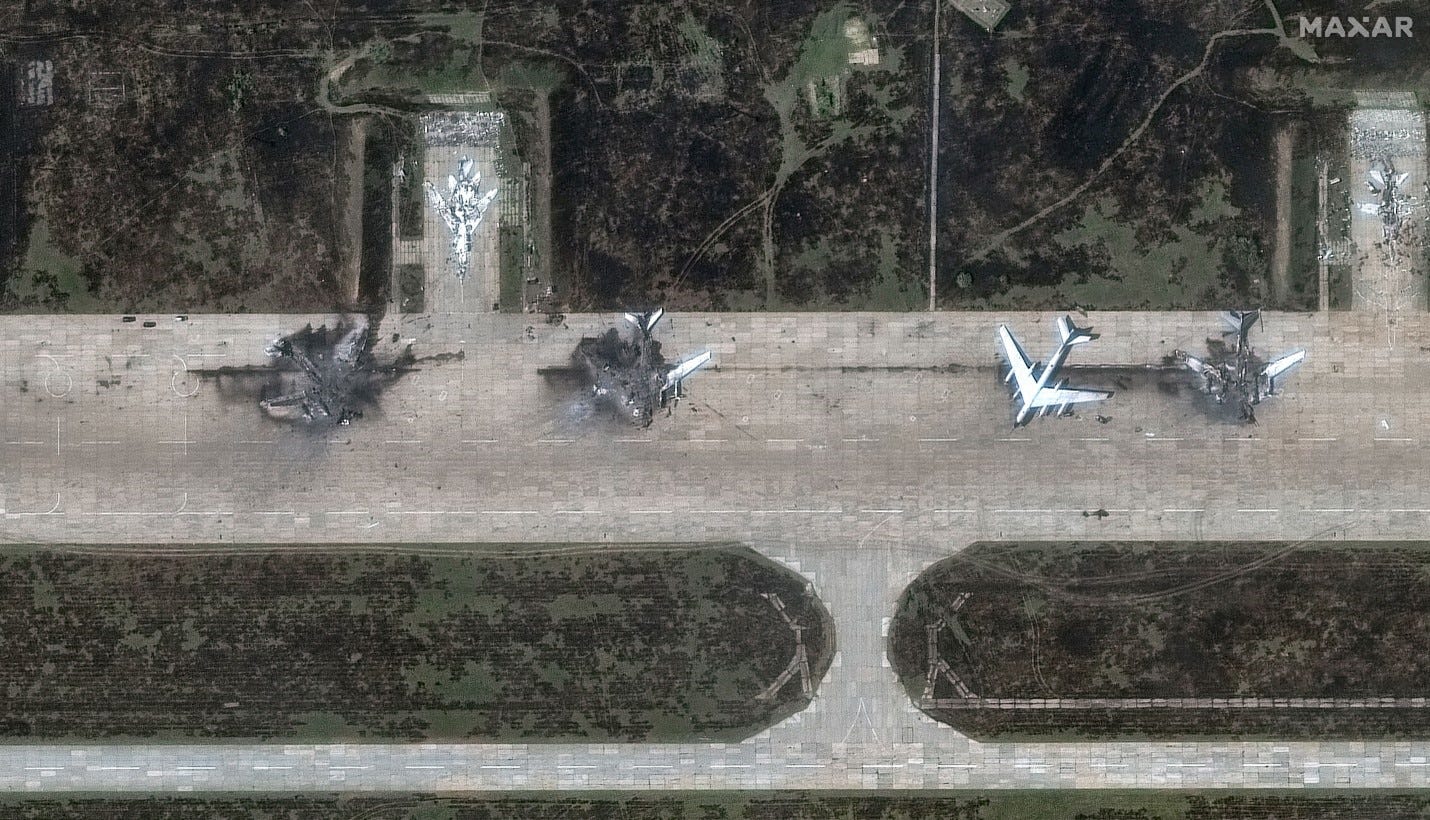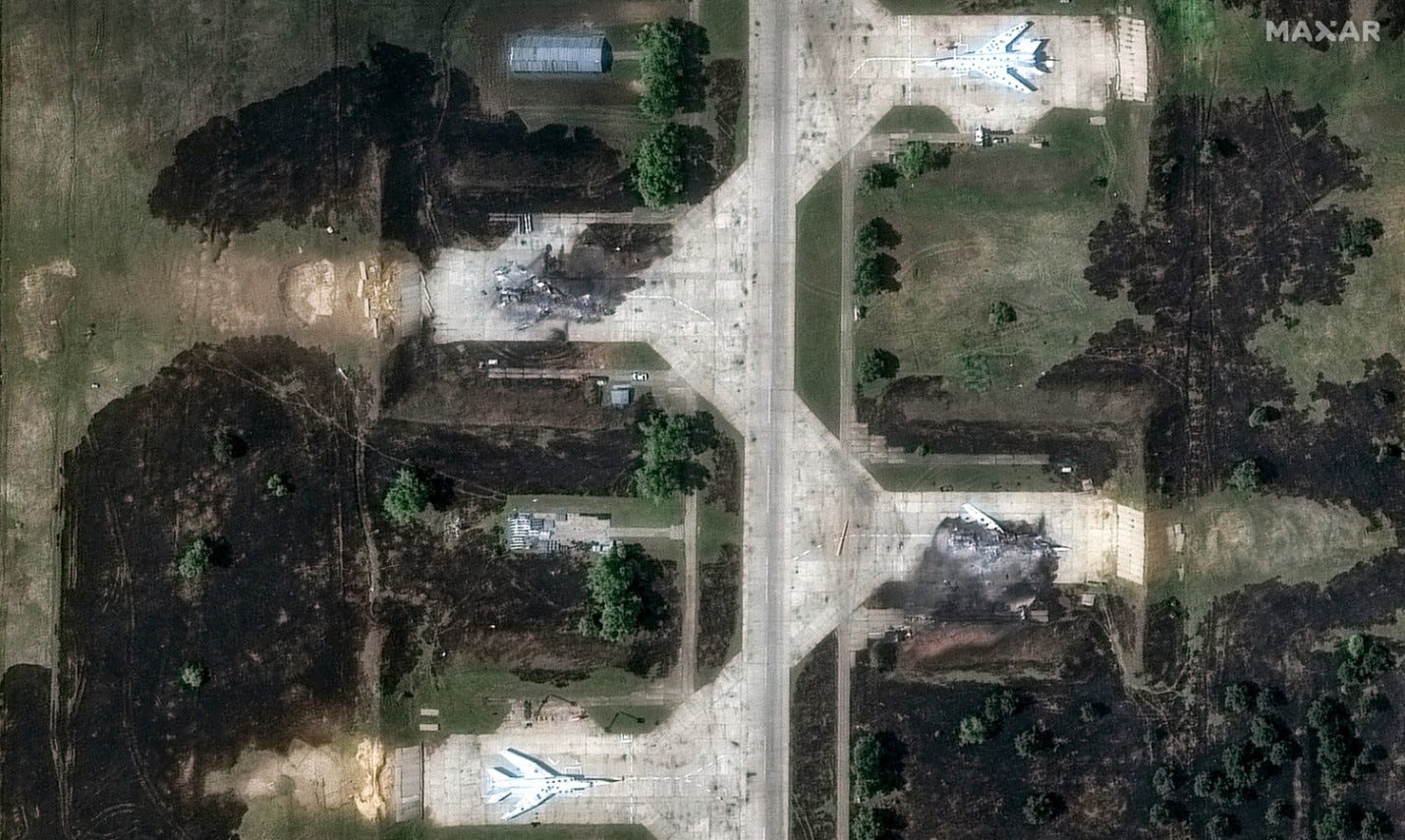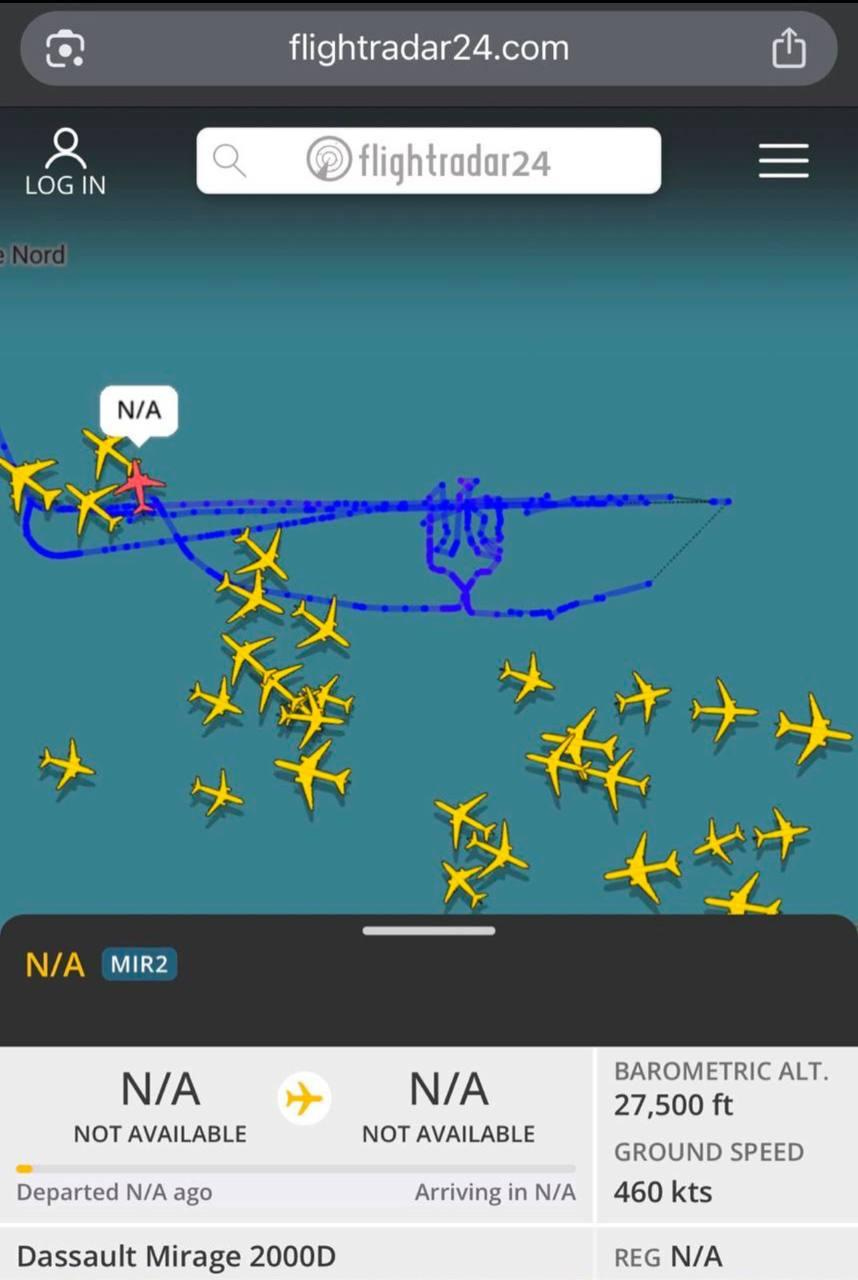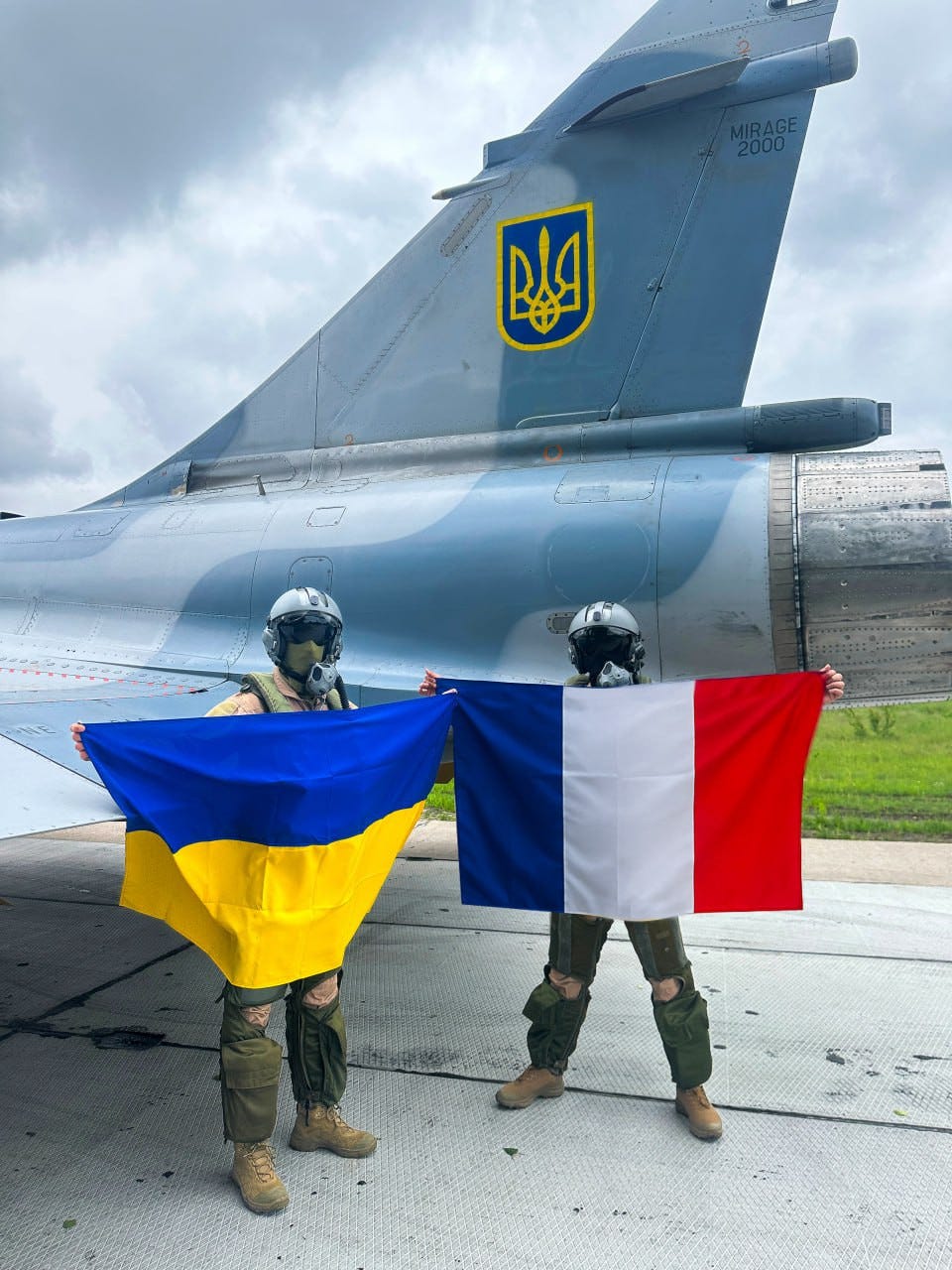Slava Ukraini! In early 2022 I began a Telegram channel aggregating news from a number of sources daily on the war in Ukraine. In June 2023 I began providing a daily draft for the Ukraine War Brief Podcast collecting news from over 70 sources daily, which formed the basis of the script. While the Podcast no longer exists I have continued to make this Brief available for my followers here on Substack for those who wish to keep up with the news from the war.
If you find the Brief informative I would appreciate it if you shared it with others.
All the latest news on the Russo-Ukraine War 6 days per week
ALONG THE CONTACT LINE
GSAFU Morning Report
For: Jun 5, 2025
The General Staff of the Armed Forces of Ukraine in its Operational Information update at 08:00 on Jun 5 stated that day 1198 of the full-scale invasion of the Russian Federation against Ukraine had begun.
The situation on the line of combat remains tense in some sectors. Ukrainian defenders continue to actively counteract the Russian aggressor, causing them significant losses in personnel, equipment and technology. Exhausting the enemy along the entire front line and continuing to disrupt the plans of Russian occupiers to advance deeper into the territory of Ukraine.
During the past day,169 combat engagements took place.
Over the past 24 hours, the enemy carried out 2 missile strikes, 76 air strikes, used 2,874 attack drones and fired approximately 4,900 artillery shells across the positions of Ukrainian forces and civilians.
Air Force Daily Report
74 ENEMY UAVS DESTROYED
➖➖➖➖➖➖➖➖➖
On the night of Jun 5 (from 22:30 on Jun 4), the enemy attacked with 103 Shahed attack UAVs and simulator drones of various types from the directions: Kursk, Orel, Millerovo, Primorsko-Akhtarsk - Russia, Chauda - TOT Crimea, as well as with an Iskander-M/KN-23 ballistic missile from Rostov Oblast - Russia.
The main areas of the air strike are Chernihiv, Kharkiv and Odessa regions.
The air attack was repelled by aviation, anti-aircraft missile troops, electronic warfare and unmanned systems units, and mobile fire groups of the Defense Forces of Ukraine.
As of 10:00, air defenses have neutralized 74 enemy Shahed UAVs (and other types of UAVs) in the east, south, and north of the country. 28 were shot down by fire weapons, 46 were lost/suppressed by electronic warfare.
Enemy air attack targets were recorded in 16 locations.
Combat Operations in the Russian Federation
There have been no major changes to the combat environment since our last report.
The Khortytsia operational-strategic group
(Responsible for the northeastern part of Ukraine. )
Sumy Sector: Russian forces recently advanced in Sumy Oblast.
Geolocated footage published on Jun 4 shows Russian servicemembers raising a flag in central Vodolahy (north of Sumy City), indicating that Russian forces recently seized the settlement.
Toretsk Sector: Russian forces recently advanced in the Toretsk direction.
Geolocated footage published on Jun 4 indicates that Russian forces recently advanced within western Yablunivka (northwest of Toretsk) and south and west of the settlement.
The Tavria operational-strategic group
(Responsible for the central-eastern and southeastern part of Ukraine.)
Pokrovsk Sector : Ukrainian forces recently advanced in the Pokrovsk direction.
Geolocated footage published on June 2 indicates that Ukrainian forces recently advanced south of Malynivka (northeast of Pokrovsk).
The Odesa operational-strategic group
(Responsible for Kherson, Qırım, (also known as Crimea) and the Black Sea.)
There have been no major changes to the combat environment since our last report.
TEMPORARILY OCCUPIED TERRITORIES
Nothing major to report.
THE HOME FRONT
5 killed, 9 injured in Russian drone strike on Chernihiv Oblast.
A Russian drone strike on the northern Ukrainian city of Pryluky overnight on June 5 killed at least five civilians, including a one-year-old child, and injured nine others, the Kyiv Independent reported citing Ukraine's State Emergency Service.
The attack, which hit residential neighborhoods, sparked large fires and left multiple homes in ruins. Chernihiv Oblast Governor Viacheslav Chaus said at least six Iranian-designed Shahed-136 drones were used in the assault.
"Five deaths have been confirmed so far, including two women and a one-year-old child who were found under the rubble," Chaus said. "Police, rescuers, and other emergency services are working at the sites of enemy strikes."
Emergency crews worked through the night to extinguish the fires. The State Emergency Service said the strike completely destroyed two residential buildings, two garages, a farm building, and a car.
Chaus added that six people were hospitalized and are receiving urgent care. According to the State Emergency Service, a 5-year-old child was injured in the attack.
Pryluky, located in Chernihiv Oblast, lies in northern Ukraine near the border with Russia and Belarus. Before Russia's full-scale invasion, it had a population of roughly 51,500.
The deadly attack is part of a broader campaign of drone and missile strikes by Russia targeting civilian infrastructure across Ukraine.
Ukraine's northern regions, including Chernihiv, have been targeted in recent weeks as Russian forces escalate their air campaign despite mounting international calls for a ceasefire.
8 killed, 46 injured in Russian attacks on Ukraine over past day.
At least eight civilians were killed and 46 others wounded in Russian attacks across Ukraine over the past day, the Kyiv Independent reported citing regional authorities on June 5.
In Donetsk Oblast, one person was killed in Rodynske and five more injured across the region, Governor Vadym Filashkin said. The region remains a primary target of Russian artillery and air strikes amid ongoing ground assaults.
Kharkiv Oblast recorded 20 injuries from Russian attacks, including four children in the city of Kharkiv — a 7-year-old boy, a 9-year-old girl, and two 13-year-old girls — Governor Oleh Syniehubov said. In Izium, a 38-year-old man was injured by the explosion of an unidentified object.
In Kherson Oblast, two people were killed and 10 others wounded, with Russia targeting residential neighborhoods and social infrastructure, Governor Oleksandr Prokudin reported.
In Sumy Oblast, two civilians were wounded after Russian forces used drones and KAB guided bombs to strike civilian areas, the regional Military Administration said.
In Mykolaiv Oblast, Russia hit a civilian minibus with a first-person-view (FPV) drone, injuring a 70-year-old man, Governor Vitalii Kim said.
In Zaporizhzhia Oblast, two people were wounded as Russian troops carried out 428 strikes on 14 settlements over the past 24 hours, Governor Ivan Fedorov reported.
RUSSIAN WORLD
Ukraine strikes Russian missile base in Bryansk Oblast.
Ukrainian forces launched a missile strike on June 5 targeting a concentration of Russian missile troops near the city of Klintsy in Russia’s Bryansk Oblast, the Kyiv Independent reported citing the General Staff of Ukraine’s Armed Forces.
The strike reportedly destroyed one Iskander missile launcher and seriously damaged two others. The targeted unit, part of Russia’s 26th Missile Brigade, had attempted to fire on Ukrainian territory — likely aiming at Kyiv — before it was hit, according to the military.
"Thanks to effective reconnaissance and the coordinated efforts of the Armed Forces and the Security Service of Ukraine, the targets were successfully hit," the General Staff said.
The agency added that there were no civilian casualties, and assessments of Russian losses are ongoing.
The Iskander is a short-range ballistic missile system used by Russia for precision strikes against military and infrastructure targets.
With a range of up to 500 kilometers (some 311 miles) and the ability to carry conventional or nuclear warheads, the system remains a key component of Russia's tactical missile forces.
Bryansk Oblast lies just northeast of Ukraine's Chernihiv and Sumy Oblasts, making it one of the key Russian regions bordering northern Ukraine.
The strike came as part of Ukraine's broader effort to degrade Russia's offensive capabilities.
On the same night, Russia launched 103 drones — including Iranian-designed Shahed suicide drones — and one Iskander-M ballistic missile against Ukrainian territory.
Targeting missile assets there may disrupt Russia's ability to launch precision strikes, particularly in advance of an anticipated new summer offensive.
UK Defense Intelligence: Russia's Casualty Count Approaches 1 Million
By the end of May 2025 Russia likely incurred approximately 980,000 casualties (killed and wounded) since launching the full-scale invasion of Ukraine in 2022, according to Ukrainian General Staff data, The UK Ministry of Defence in their Jun 4 Intelligence Update on Ukraine stated.
In the first five months of 2025, Russia likely sustained approximately 196,000 casualties. However, through 2025 so far, russian casualty rates have been generally decreasing. 48,000 were recorded in January 2025, and the 34,500 in May 2025 was the lowest monthly total of the year, a drop of 28 per cent.
Russian activity was lower in the opening months of 2025, which has likely correlated to a drop in the rate of reported casualties. Casualty rates will highly likely increase if russia increases its attacks across the frontline in Ukraine.
RELATED INTERNATIONAL NEWS
Ukraine hits out at Europe's payout from frozen Russian cash.
Ukraine's government has criticised a decision to take billions of euros of Russian wealth frozen in Europe and hand it to Western investors, warning that it weakened Europe's stand against Moscow, Reuters reports.
The criticism follows a move last month by Belgium's Euroclear to take 3 billion euros ($3.4 billion) of Russian investor cash held at the clearing firm to pay Westerners who lost out when Moscow seized their money held in Russia.
Now Ukraine has warned that it sends a wrong signal and threatens to weaken Europe's hand when dealing with Russia, while it debates using the entire $300 billion of Russian wealth stranded in Europe to rebuild and defend the battered country.
"If private investors are compensated before the victims of war, it won't be justice," said Iryna Mudra, a senior official in Ukrainian President Volodymyr Zelenskiy's office, in Kyiv's first public comments on the move.
"It creates a perception of inconsistency, of Europe wavering in its resolve," Mudra, a deputy head of Ukraine's presidential administration, told Reuters.
"International law requires that the aggressor is to make full reparation to the victim and not to investors who ... entered a high-risk jurisdiction," said Mudra, who is in charge of legal affairs in Zelenskiy's administration.
The criticism comes at a critical time for the Western alliance backing Kyiv, with U.S. President Donald Trump's administration distancing itself from Europe and casting doubt over its commitment to Ukraine's defence and Russian sanctions.
Mudra, one of a small circle of officials that set policy, also stressed the importance of maintaining control of the frozen Russian assets, which chiefly belong to its central bank with the majority held at Euroclear.
The central bank assets were frozen at the outset of war in the single most powerful sanction directed at Russia over its full-scale invasion of Ukraine, a penalty that is deeply resented in Moscow.
Euroclear in March gained clearance from Belgium, its principal legal authority, to make the payout, people familiar with the matter have told Reuters, after the European Union changed its sanctions regime, last year to make this possible.
A spokesperson for the Belgian government said: "This is not a Belgian decision but the application of a European regulation decided unanimously by the member states."
Euroclear has emphasised that it only implements sanctions and does not take decisions about lifting them.
Three Russian sources recently told Reuters that Russian President Vladimir Putin's conditions for ending the war include the resolution of the frozen assets issue.
Ukraine, meanwhile, is campaigning fiercely against any return of the money to Moscow. Euroclear alone held 195 billion euros of cash in March, opens new tab - mainly Russian central bank funds, with some belonging to Russian investors.
"If it is returned to Russia, it will be converted into tanks, missiles, drones, training of new troops," said Ukraine's Mudra. "The world ... must demonstrate that unlawful war brings irreversible financial consequences."
Some see the frozen Russian wealth as a lifeline for Kyiv.
In the past, the West has engineered loans and payments to Ukraine, opens new tab from the interest on the stranded Russian stockpile, which Putin denounced as theft.
Ukrainian officials fear the Euroclear payout, even though it does not affect the central bank money, could undermine their efforts to secure an agreement on using the wider pool of Russian assets to help their country.
Last month's move also drew criticism abroad.
"It is mind boggling that the priority is to reimburse corporate interests rather than spend the money defending Ukraine," said Jacob Kirkegaard, a sanctions expert with the Peterson Institute for International Economics, a Washington-based think tank.
European Union leaders are expected to renew sanctions, including a freeze of Russian assets, at a summit meeting in June, although they could yet face an attempt by Hungary to derail those efforts.
Ukraine, US plan to launch minerals investment fund by year's end.
A joint Ukrainian-American investment fund tied to the countries' minerals agreement could begin operations by the end of 2025, Ukrainian Economy Minister Yulia Svyrydenko said on Jun 4, reports Reuters.
The fund is a central component of the bilateral mineral resources agreement signed April 30, which grants the U.S. special access to projects developing Ukraine’s vast reserves of strategic minerals, including lithium, titanium and rare earth elements.
On June 4, Svyrydenko met in Washington with U.S. Treasury Secretary Scott Bessent and officials from the U.S. International Development Finance Corporation (DFC), which will serve as the American partner in the fund's management.
"We discussed very concrete steps how to make this fund operational during this year," Svyrydenko said in Washington. We plan to have the first board meeting of this fund in July, and we will discuss what will be the seed capital to start operating this fund."
The Reconstruction Investment Fund will be jointly managed by the DFC and Ukraine's Public-Private Partnerships Agency. While both governments have withheld operational specifics, the fund is expected to serve as a long-term vehicle for Ukraine's postwar recovery.
Kyiv launched the fund on May 23, after months of negotiations that strained ties with Washington. Negotiations led to the removal of controversial provisions Ukrainian officials feared could allow for exploitation of Ukraine's resources.
The Ukrainian parliament approved the necessary amendments to the Budget Code on June 4 to allow for national revenue streams — including rent payments, subsoil permit proceeds, and production-sharing revenues — to be redirected to the fund.
President Volodymyr Zelensky signed the ratified minerals agreement on May 12. Two additional operational agreements were signed on May 13 to facilitate the fund's launch.
Prime Minister Denys Shmyhal previously said that future U.S. military assistance could count as contributions to the fund, but clarified that past aid would not be included.
Despite lacking explicit security guarantees from the U.S. — a key priority for Kyiv — the agreement signals a new phase in U.S.-Ukraine economic cooperation.
The US refuses to provide air defense systems for the “deterrence forces” in post-war Ukraine.
The United States will not deploy its air defense systems to support the “deterrence forces” that the United Kingdom and France plan to deploy in post-war Ukraine, Bloomberg reported, citing sources familiar with the matter.
European allies have concluded during talks with their American counterparts that President Donald Trump will not provide the guarantees they sought to support the European-led “coalition of the willing.”
The unwillingness of the United States to provide the support sought by its European partners reflects the differences among Western allies over how to counter Russian aggression in Ukraine. European officials have argued that U.S. guarantees are necessary, along with strong Ukrainian forces backed by training and allied troops, to deter Russia.
“U.S. security guarantees are the only way to effectively deter Russia from attacking Ukraine again,” British Prime Minister Keir Starmer stated this February.
The UK and France have been trying to convince Trump to use American air power, as well as support for border surveillance and intelligence.
According to the sources, despite lowered expectations, Britain and France still hope that their American partners will continue to provide intelligence and monitor the Russian-Ukrainian border.
European governments have adjusted their assessment and now believe that the combination of Ukrainian forces, allied training, European troops and aircraft deployed on NATO’s eastern flank, and patrols in the Black Sea is sufficient.
The United Kingdom and France have already finalized the location and modus operandi of the force, but have postponed the plan indefinitely until ceasefire talks resume.
At the same time, some European officials also hope that Trump will intervene if British and French troops are
As Bloomberg reported in April, fifteen of the 30 coalition members, including non-European countries such as Canada, Australia, Japan, and New Zealand, have offered their forces, including aircraft, warships, and other military equipment.
MILITARY & TECH
More clarity emerges regarding Russian aircraft lost on Jun 1.
The Institute for the Study of War (ISW), a US based think tank, in its Jun 4 Russian Offensive Campaign Assessment reported that Ukrainian and Western officials and open-source analysts continue to clarify the battlefield damage resulting from Ukraine's "Operation Spider's Web" long-range drone strike series against Russian air bases on June 1.
Ukraine's Security Service (SBU) published new footage on June 4 from Operation Spider's Web showing Ukrainian drones approaching the wings, sides, tops, and underbellies of Russian fixed-wing aircraft at various airfields.
The SBU reported that the footage shows first-person view (FPV) drones striking A-50 airborne early warning and control (AWACS) aircraft, Tu-95 and Tu-160 strategic bombers, Tu-22 supersonic bombers, An-12 transport aircraft, and Il-78 aerial refueling tankers at Belaya Air Base in Irkutsk Oblast; Olenya Air Base in Murmansk Oblast; Dyagilevo Air Base in Ryazan Oblast; and Ivanovo Air Base in Ivanovo Oblast. Some of the clips in the video show aircraft on fire.
The SBU stated that Ukrainian drones struck 41 Russian aircraft. Ukrainian President Volodymyr Zelensky and the SBU stated that Russia will be unable to restore half of the Russian aircraft that Ukraine struck or that it will take Russia years to restore them.
A senior NATO official reported to Ukrainian news outlet Suspilne that Operation Spider's Web damaged 40 Russian aircraft and confirmed that the operation destroyed 10 to 13 aircraft. The official also stated that Russia may respond to the loss of its strategic bombers, which Russia uses to launch cruise missiles against Ukraine, by adjusting strike packages to include more drones and ballistic missiles and fewer cruise missiles.
Russian opposition outlet Meduza reported that a NATO official stated that Russian forces previously used the destroyed aircraft to launch over 3,000 cruise missiles that have struck critical infrastructure and civilian targets in Ukraine since February 2022.
Maxar satellite imagery collected on June 4 indicates that Ukrainian drone strikes destroyed at least two Tu-22 bombers and three Tu-95 bombers at Belaya Airbase (see embedded imagery below).
Ukrainian open-source intelligence (OSINT) group AviVector posted satellite imagery on June 4 that indicates that Ukrainian drones destroyed four Tu-95MS bombers and one An-12 transport aircraft at Olenya Airbase.
AviVector assessed that Ukrainian forces destroyed seven Tu-95MS bombers, four Tu-22M3 bombers, and one An-12 transport aircraft and likely damaged a Tu-95MS bomber at Olenya and Belaya airbases.
Ukrainian special services reportedly used artificial intelligence (AI) to direct drones during Operation Spider's Web. The SBU stated on June 4 that it used "autonomous artificial intelligence (AI) algorithms and manual operator intervention" to conduct the June 1 strikes against Russian air bases.
The SBU stated that some drones lost signal during flight and switched to performing their missions using AI along a preplanned route.
ISW recently assessed that Russia and Ukraine have demonstrated some integration of limited AI capabilities into drone operations but have not deployed them at scale on the battlefield. Promises of an immediate AI and machine learning (ML) drone revolution are premature as of June 2025, even in the wake of Operation Spider's Web, given that both Russian and Ukrainian forces will need to allocate more time, testing, and investment to deploy these drones on the frontlines en masse.
Grumpy Here - A little treat to close today’s Brief. Yesterday, a Ukrainian Mirage fighter flew out into the middle of the Black Sea and flew a route that traced a Ukrainian trident before returning to base.
When it returned a picture was posted. This is to my knowledge the first ever photo published of a French built Mirage 2000 in Ukrainian service
That’s it for today’s Brief folks if you would like to keep up with events in Ukraine daily please consider subscribing, it’s free!






